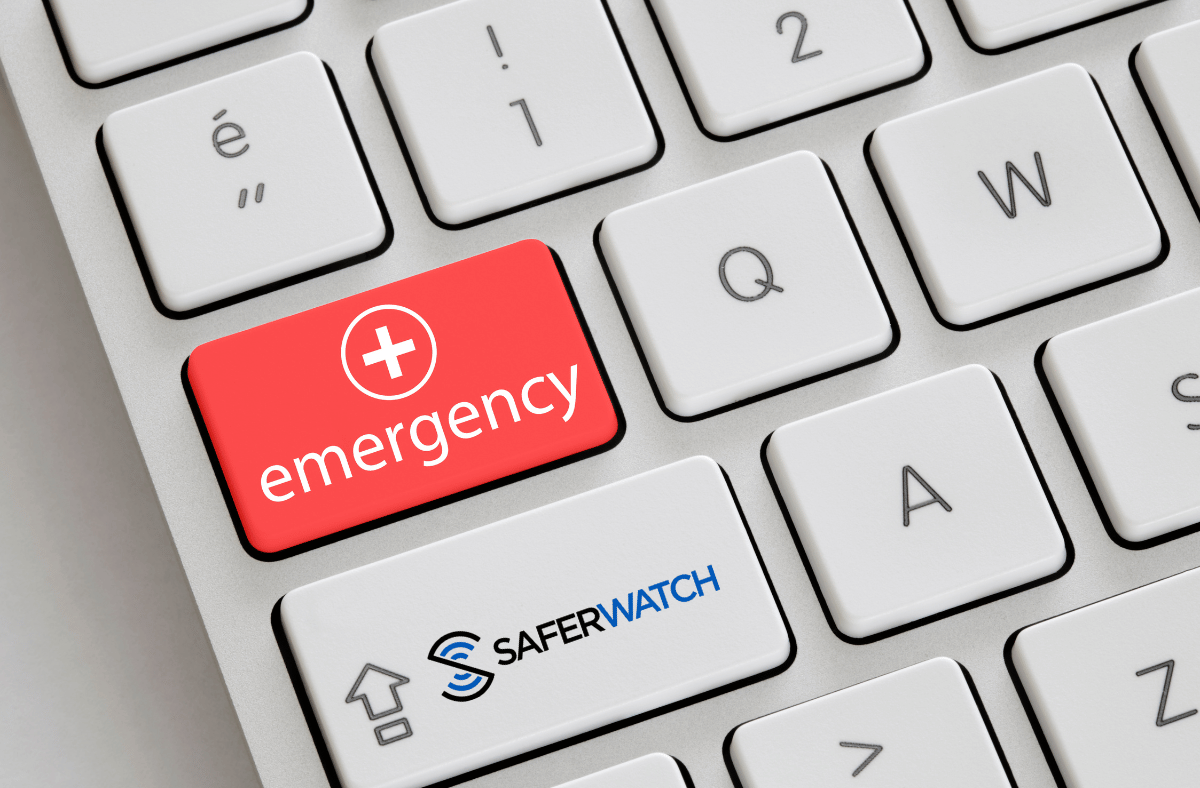Maximizing Safety: The Ultimate Guide to Emergency Notification System for Schools

Maximizing Safety: The Ultimate Guide to Emergency Notification System for Schools
Emergencies can strike at any moment, and when they do, every second counts. In the realm of education, school administrators, teachers, and students need to be prepared and have the proper tools to respond effectively to various critical situations.
A well-implemented emergency notification system for schools can make such a big difference to overall school safety.
This blog post will delve into the importance of such systems in schools, the key features of an ideal solution, the types of emergency alerts, and the steps for implementing a comprehensive school alert system. Stay with us to discover how to keep your school community safe and informed during emergencies.
Quick Summary
- Emergency notification systems are essential for school safety, providing timely communication in critical situations.
- An ideal system should incorporate speed and reliability, customization and flexibility, as well as integration with existing systems.
- Training and preparedness are necessary to ensure a successful emergency notification system that meets legal requirements.
The Importance of Emergency Notification Systems in Schools
Emergency notification systems have become an essential part of school safety, ensuring prompt and effective communication during critical incidents like those involving the National Weather Service. Schools face various emergency situations, such as active shooter situations, bomb threats, and medical emergencies.
In these instances, having a reliable emergency alert system in place can mean the difference between life and death, ensuring that vital information reaches the appropriate recipients in a timely manner. In some states, it is even required for schools to install silent panic alert buttons including Texas where Gov. Abbot signed Alyssa’s Law in May 2023.
In a world where emergencies are an inevitable part of life, having a robust emergency mass notification system is crucial for the safety and well-being of students, teachers, and staff. Implementing an emergency alert system should be a top priority.
Enhancing School Safety
Implementing a reliable emergency notification system in line with Federal Emergency Management Agency guidelines can significantly improve school safety.
A reliable emergency alert system will not only notify stakeholders immediately in case of device charging or connectivity issues but also allow for proactive resolution, reducing the effect on the response. The essential characteristics of an optimal school emergency notification system include:
- Swiftness and dependability
- Adaptability and customizability
- Integration with existing systems
- Constant monitoring
All these features are crucial for effective communication with state and local authorities during emergencies, ultimately helping to keep students and faculty safe.
Schools typically receive emergency alerts for severe weather events, active shooter incidents, and natural disasters through channels such as NOAA Weather Radio.
To implement a comprehensive school alert system, it is necessary to assess needs and requirements, select an appropriate solution, and provide training and preparedness. Ensuring that the school community is well-informed and understands how to respond during various emergency situations is vital for enhancing overall safety.
Effective Communication
During moments of uncertainty, effective emergency communication is of paramount importance. Rapid and precise transmission of information to relevant parties, including first responders, law enforcement, and campus personnel, is crucial for ensuring that everyone is informed of the situation and can react swiftly and appropriately.
A well-designed notification system can help schools deliver important emergency information by providing essential information in a timely manner.
An ideal school emergency notification system should have the following features:
- Capability to send messages to various devices
- Utilization of multiple communication channels
- Provision of clear instructions on how to remain safe
- Delivery of important emergency information to necessary authorities, such as police, fire, and ambulance services
Tools like the SaferWatch App are designed to enable quick and easy activation of emergency notification endpoints, even during a national emergency.
With effective communication in place, schools can better manage critical events and ensure the safety of their community.
Key Features of an Ideal School Emergency Notification System
When designing an ideal school emergency notification system, there are several key features that must be taken into account. These include speed and reliability, customization and flexibility, and integration with existing systems.
A well-designed system ensures that people are promptly notified in an emergency, allowing them to take the necessary steps to remain safe.
One example of a comprehensive emergency notification system is the SaferWatch App. Activator is a software solution that enables administrators to swiftly send a desktop alert for incidents ranging from minor IT outages to critical emergencies such as a “lockdown” or “shelter in place” with just a few clicks.
By considering these key features and selecting the right solution, schools can ensure that their emergency notification system is effective and reliable, ultimately contributing to the safety and well-being of the school community.
Speed and Reliability
Speed and reliability are integral to an effective emergency notification system for schools, guaranteeing rapid and dependable delivery of emergency notifications to designated recipients.
With the SaferWatch mass notification system, schools can be confident that their system has been designed to provide high scalability.
In order to ensure that notifications are delivered promptly and accurately, best practices such as multiple channel alerts, SMS messaging, maintaining accurate information in the system, segmenting the recipient list, using pre-made templates, assigning roles, and providing training should be implemented.
A swift and reliable emergency notification system is crucial for school safety, as it enables stakeholders to take immediate action in response to various emergency situations. By prioritizing speed and reliability, schools can ensure that their emergency notification system provides:
- Timely and accurate information
- Quick dissemination of alerts
- Multiple communication channels (e.g., text messages, emails, phone calls)
- Integration with other safety systems (e.g., fire alarms, security cameras)
- Easy-to-use interface for administrators
- Regular testing and maintenance to ensure the functionality
These features help to keep students, faculty, and staff safe during critical events.
Customization and Flexibility
Customization and flexibility enable schools to tailor their emergency notification system to their specific needs and requirements. For example, SaferWatch offers these features:
- Anonymous Tip Reporting
- Threat Reporting
- Incident Management
- Drill Tracking
- Threat Assessment
- Mobile Panic Alert System
- Mass Notification Alert System
- Reunification & Safety Check-in
By adapting the system to suit individual requirements, schools can send notifications to various devices, employ a variety of communication channels, and provide guidance on what steps should be taken for safety.
A customizable system offers the following benefits for schools:
- Easy updating of notification settings and preferences as needs evolve over time
- Meeting the unique needs of each school
- Adaptable and versatile system that remains effective and up-to-date
- Contributing to the overall safety and well-being of the school community.
Integration with Existing Systems
Integrating a school emergency notification system with existing systems can facilitate keeping the system up-to-date and can be utilized in combination with other systems, such as security systems, to provide a comprehensive emergency response.
By ensuring efficient communication during emergency situations, integration eliminates the need for additional resources and streamlines the overall process.
Compatibility issues, data security concerns, and the requirement for additional resources are all challenges associated with integrating existing systems with emergency notification systems in schools.
However, by utilizing existing communication channels, such as email, text messaging, and phone calls, integration can be facilitated, ultimately leading to enhanced communication, increased efficiency, and minimized costs.
Types of Emergency Alerts for Schools
Schools must be prepared to handle a wide range of emergency alerts, including severe weather events, active shooter incidents, and natural disasters. These critical situations require rapid and effective communication to ensure the safety and well-being of students, staff, and faculty.
The Emergency Alert System (EAS) and Wireless Emergency Alerts provide a means for schools to receive timely, accurate, and relevant information during emergencies, thus enabling them to take appropriate action. Implementing a school emergency alerts system is essential for maintaining a safe and secure learning environment.
It is important for schools to be aware of the various types of emergency alerts and to have a system in place that can effectively manage these notifications. This includes:
- Maintaining up-to-date contact information for all members of the school community
- Regularly testing the system and ensuring that it is functioning properly
- Providing training and education to staff and students on how to respond in the event of an emergency
By being prepared, schools can better protect their community during critical events.
Severe Weather Events
Severe weather events can present substantial risks to schools due to their potential to become deadly swiftly, resulting in destruction of property and placing students and faculty at risk.
An effective emergency notification system can enable schools to quickly alert students and staff of potential risks, providing them with the necessary information to stay safe in the event of severe weather.
To ensure that the school community is adequately prepared for severe weather events, it is crucial to have a comprehensive emergency notification system in place that can deliver timely alerts and provide clear instructions on how to respond.
By being proactive in their approach to severe weather events, schools can minimize the risk to students and staff and ensure a swift and effective response.
Active Shooter Incidents
Active shooter incidents are an increasingly prevalent threat in today’s society, and schools must be prepared to respond quickly and effectively to these situations.
A reliable emergency notification system is crucial for school safety during active shooter incidents, enabling swift communication and response. Best practices for responding to active shooter incidents include:
- Promptly deploying law enforcement to contain the shooting and reduce harm to victims
- Inviting individuals to take part in minimizing the repercussions of the incident
- Adhering to the ‘Run, Hide, Fight’ protocol
In the event of an active shooter incident, having a reliable emergency notification system in place can save lives by providing timely information and guidance to students and staff.
By prioritizing training and preparedness, schools can better equip their community to respond effectively during these critical situations and minimize the potential for harm.
Natural Disasters
Natural disasters, such as:
- Earthquakes
- Forest fires
- Tornadoes
- Hurricanes
- Floods
Can have a profound impact on schools and their surrounding communities. In the face of these potentially catastrophic events, having a well-designed emergency notification system is essential for quickly notifying students and staff of potential dangers and providing them with the information they need to stay safe.
Implementing an effective emergency notification system is a crucial component of a school’s preparedness plan for natural disasters.
By ensuring that students, staff, and faculty are well-informed and understand how to respond during these emergency situations, schools can minimize the risk to their community and ensure a swift and effective response.
Implementing a Comprehensive School Alert System
Implementing a comprehensive school alert system is a critical task that requires careful planning and consideration.
In order to successfully implement such a system, it is necessary to assess needs and requirements, select an appropriate solution, and ensure training and preparedness. By taking these steps, schools can create a robust and effective emergency notification system that will help keep their community safe and informed during critical events.
As schools face an increasingly complex landscape of potential emergencies, having a comprehensive school alert system in place is more important than ever.
By following the recommended steps and adhering to federal and state regulations and guidelines, schools can ensure that their emergency notification system is not only effective but also legally compliant, ultimately contributing to the overall safety and well-being of their community.
Assessing Needs and Requirements
The first step in establishing an efficient emergency notification system is evaluating the needs and requirements of a school.
This involves considering the types of emergency alerts that schools should be cognizant of, such as severe weather events, active shooter incidents, and natural disasters. By understanding the unique needs and requirements of a school, administrators can make informed decisions about the most appropriate solution for their emergency notification system.
In addition to identifying the types of emergencies that schools may face, administrators should also consider the key features of an ideal school emergency notification system, such as speed and reliability, customization and flexibility, and integration with existing systems.
By taking these factors into account, schools can ensure that their emergency notification system is tailored to their specific needs and requirements, ultimately contributing to a safer and more secure learning environment.
Selecting the Right Solution
Selecting the right solution for a school’s emergency notification system involves evaluating various options and choosing the one that best meets the school’s needs and budget.
Factors to consider include the system’s speed and reliability, its customization and flexibility, and its integration with existing systems. By carefully weighing these factors and selecting the most suitable solution, schools can ensure the effectiveness and reliability of their emergency notification system.
When selecting an emergency notification system vendor, it is important to consider the organization’s reputation, the features and capabilities of its system, and its commitment to ongoing support and development.
By choosing a reputable and reliable vendor, schools can be confident that their emergency notification system will be up to the task when it matters most, ultimately contributing to the safety, security, and future of their community.
Training and Preparedness
Effective training and preparedness are essential components of a successful emergency notification system.
By ensuring that staff and students are well-informed and understand how to respond during various emergency situations, schools can minimize the risk to their community and ensure a swift and effective response. Measures to ensure preparedness include:
- Educating staff and students on the appropriate responses to various emergency situations
- Familiarizing them with the emergency notification system
- Implementing training exercises and drills
Regularly reviewing and revising training and preparedness plans is also crucial to ensuring that personnel and students are informed of the most recent emergency protocols and procedures. Additionally, it helps to verify that the emergency notification system is operating efficiently.
By prioritizing training and preparedness, schools can equip their community with the knowledge and skills needed to respond effectively during critical events, ultimately contributing to the overall safety and well-being of their community.
Real-Life Examples of Emergency Notification Systems in Action
Emergency notification systems play a vital role in real-life emergency situations, demonstrating their effectiveness in various scenarios. For instance, the SaferWatch App has a feature that provides a swift and efficient method of notifying multiple people of various situations in a timely manner, simply by pressing a button on a mobile device.
The SaferWatch app is a comprehensive public alert and warning system that has been utilized to keep communities informed during emergencies. This is a modern emergency alert system that works.
SaferWatch illustrates the importance of having a reliable and effective emergency notification system in place, demonstrating its ability to make a significant difference in the outcome of various emergency situations.
How Do These School Safety Features Benefit Schools?
- This emergency alert system reduces police response time
- Immediately notifies the public of a dangerous situation, eliminating people wandering the halls, and going on full lockdown on school property
- Significantly amplify police preparedness for an emergency
Legal Requirements and Compliance for School Emergency Notification Systems
Implementing an emergency notification system in schools is not only essential for safety, but also required by federal and state regulations and guidelines. The U.S. Department of Education’s Handbook for Campus Clery Act Compliance outlines timely warnings and emergency notifications as legal requirements for implementing emergency notification systems in schools. Additionally, federal law has mandated since 1990 that colleges and universities have a notification system for emergencies.
While federal regulations provide overarching guidance, it is essential to consult specific state and local regulations for further information regarding the implementation of emergency notification systems in schools. By adhering to these legal requirements and ensuring compliance, schools can not only protect their community but also avoid potential legal ramifications that may arise from non-compliance.
Full Summary
In conclusion, implementing an effective emergency notification system in schools is crucial for ensuring the safety and well-being of students, staff, and faculty. By understanding the importance of such systems, identifying key features, being aware of various types of emergency alerts, and following the necessary steps for implementation, schools can create a robust and reliable system that serves their community during critical events.
As emergencies continue to be an inevitable part of life, having a comprehensive school alert system in place becomes more crucial than ever, ultimately contributing to a safer and more secure learning environment for all.
Having an effective protocol and the best tools and resources available in an emergency is critical for protecting students and staff members. We provide essential school safety tools to ensure that our most vulnerable population is protected.
SaferWatch technology and services are a crucial resource for children, caregivers, and educators. Contact SaferWatch to learn more about advanced mobile panic alarm solutions and other tools that prevent crises and ensure safety in educational facilities. Call today to schedule a free demo: 844-449-2824.
Remember that in some cases, there are government grants for school safety that can subsidize an emergency alert system like SaferWatch.
Frequently Asked Questions
What are examples of emergency notification messages?
Police are investigating a robbery in the area and an Emergency Alert System has been issued for a hazardous spill at a certain location. Stay clear of the affected areas until further notice.
Who can use EAS?
EAS The Emergency Alert System (EAS) is a national warning system in the United States designed to allow authorized officials to broadcast emergency alerts and warning messages to the public via cable, satellite, or broadcast television, and both AM/FM and satellite radio. Participants – radio and television broadcasters, cable systems, satellite radio and television providers, and wireline video providers – can use the EAS to deliver local alerts on a voluntary basis, but are required to provide the capability for the President to address the public during a national emergency.
The EAS is an important tool for emergency preparedness and response, as it allows for the rapid dissemination of critical information to the public. It is also used to alert the public to other types of emergencies, such as natural disasters, public health threats, and other public safety issues. By providing timely and accurate information, the EAS helps to improve the environment.
What is the silent panic button for schools?
The silent panic button is an effective system for schools to quickly alert first responders to an emergency, allowing for instant 2-way communication and providing critical updates on location, status, and entry.
It enables schools to quickly and easily alert first responders to an emergency, allowing for instant two-way communication and providing critical updates on location, status, and entry. This system can help to ensure that first responders are able to respond quickly and effectively to any emergency situation.
What are the key features of an ideal school emergency notification system?
An ideal school emergency notification system should have speed and reliability, be customizable and flexible, and integrate with existing systems for optimal efficiency.
What types of emergency alerts should schools be prepared for?
Schools should be prepared for alerts related to severe weather, active shooter incidents, and natural disasters in order to ensure the safety of their students.
These alerts should be taken seriously and acted upon quickly. Schools should have a plan in place to respond to these alerts and ensure that students are safe.
Schools should also have a system in place to communicate with students.
SaferWatch In the News:
- Motorola Solutions and SaferWatch Align to Support School Safety
- App Developed for Educators In Case of A School Shooting
- BCPS Unveils Alyssa’s Alert In New Initiative To Add Additional Layer of Security for Students and Staff
- Stand With Parkland Partners With SaferWatch Mobile App to Protect Schools
- Alyssa’s Law Reviewed by MSD Commission
- BCPS uses SaferWatch app to comply with Alyssa’s Law
- BSO: 12-Year-Old Boy Arrested For Making School Shooting Threat
- Fort Lauderdale Police Investigate Three School Threats




























